How to Make a Home Look Bigger: 12 Tips, Tricks & Hacks

Learn how to make a home look bigger by using your brain! Our brains are easily deceived by visual tricks that affect our perception of size and space. I will share ways to trick your eye and make a small home look bigger than it is.
Table of contents
- 1. Use vertical lines
- 2. Create space by staying low
- 3. Flooring direction matters
- 4. Use paint colors strategically
- 5. Keep the ceiling light
- 6. Mirrors reflect
- 7. Reflective materials
- 8. Scale and proportion
- 9. The art of hidden space
- 10. Minimize clutter
- 11. Create height with light
- 12. Hang curtains high and wide
Which line looks longer to you? The top one looks longer but both lines are equal in length.
1. Use vertical lines to create height
The vertical line here always appears longer even though the lines are the same length. We can add vertical lines in our homes to help it appear taller. Vertical lines always make us look up and experience a space taller than it is.
For example, opt for wallpaper with vertical lines or paint stripes, or hang curtains with stripes in a space where you want to accentuate the ceiling.
Bookshelves that reach close to the ceiling draw the eye up.
Stack smaller pictures to form a vertical line.
2. Create space by staying low to the ground
Furniture lower to the ground changes a room's visual weight and expands the space between the ceiling and the ground. This will create an impression of higher ceilings giving the room an open, airy feel.
3. Flooring direction matters
Often we don’t think about the direction the planks or tiles on our floors are facing. But this can make a difference to how your eyes perceive the amount of space you have in your room.
Laying out the floor parallel to the longest wall can visually stretch your room, making it appear longer than it actually is.
4. Use paint colors strategically
Color plays a massive role in how we perceive space. Light colors, especially whites and neutrals, have the power to help us feel quite relaxed. Dark colors, like black, gray, and blue, feel more oppressive and limit the amount of space that your eye perceives.
5. Keep the ceiling light
Paint the ceiling a lighter color than the walls and it will transform how you perceive the height of the room. Light has a natural tendency to draw our eyes upwards and a lighter color ceiling amplifies this effect. If you want to paint a room blue, paint the ceiling white or a paler shade of blue to create a visual contrast.
6. Mirrors reflect
Mirrors are great tools to make your space feel brighter, larger, and infinitely more inviting. Our brains interpret the reflection from a mirror as an additional spatial depth to a room.
If there are areas of your home where you feel like the space could feel larger, or it’s dark, hang a mirror where you think there should be more light reflected.
7. Reflective materials
Reflective surfaces capture and scatter light and can make dull, claustrophobic rooms brighter.
A glossy lacquered coffee table is one example. This concept of including shiny furniture or surfaces should be used sparingly.
8. Scale and proportion
The furniture in a room can deceive or distort our perception of space. For example, in a small room, you may think it’s better to fill it up with lots of small pieces of furniture.
If you can pick one or two oversized large pieces, it can make the room feel quite grand and anchor the space. The key is to not overcrowd the space.
9. The art of hidden space
Hidden storage, like built-in cabinetry, can help make a space feel calm, expansive, neat, and sleek instead of cluttered. The less our eyes have to dart around the room to process individual elements, the more comfortable the room feels.
10. Minimize clutter
Less is more and clutter is the enemy of small spaces. Clutter makes your home feel suffocating and you’ll feel low-grade stress.
A room with half-empty surfaces and curated items on the other half feels large and calm. Group similar small items on a tray to appear like a large object.
11. Create height with light
Uplighting makes a room feel taller because your eye follows the vertical path of light and the brain perceives the room as having more volume than it actually has.
12. Hang curtains high and wide
Don’t hang curtains a little bit above the windows–instead, hang them just below the ceiling. Suddenly, your ceiling will look taller.
If you want your room to feel a lot wider, why not hang curtains across the entire wall? The whole wall looks more expansive and wider. So, push the curtains up to the ceiling and stretch them out wide across the wall. Choose light-colored drapes with a vertical pattern to maximize the illusion.
How to make a home look bigger
That’s decorating a small home to make it look bigger! These tricks of the eye and brain will help make a small home feel larger without adding on any space. Have you tried these tricks in a small room? Let me know what you think in the comments.
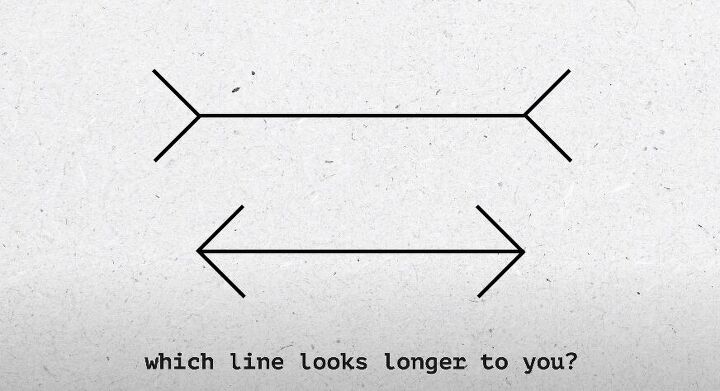




















































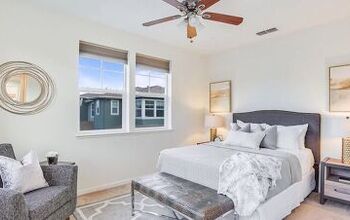
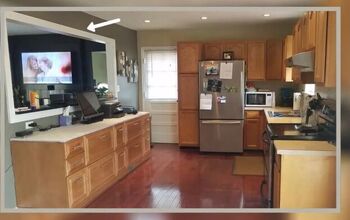
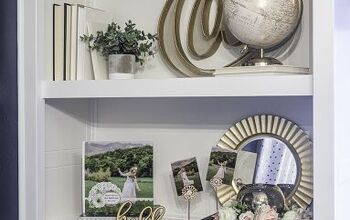
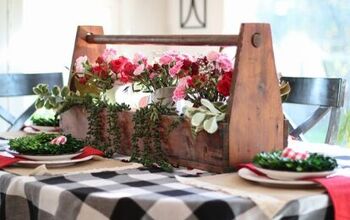


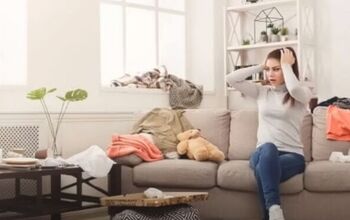







Comments
Join the conversation